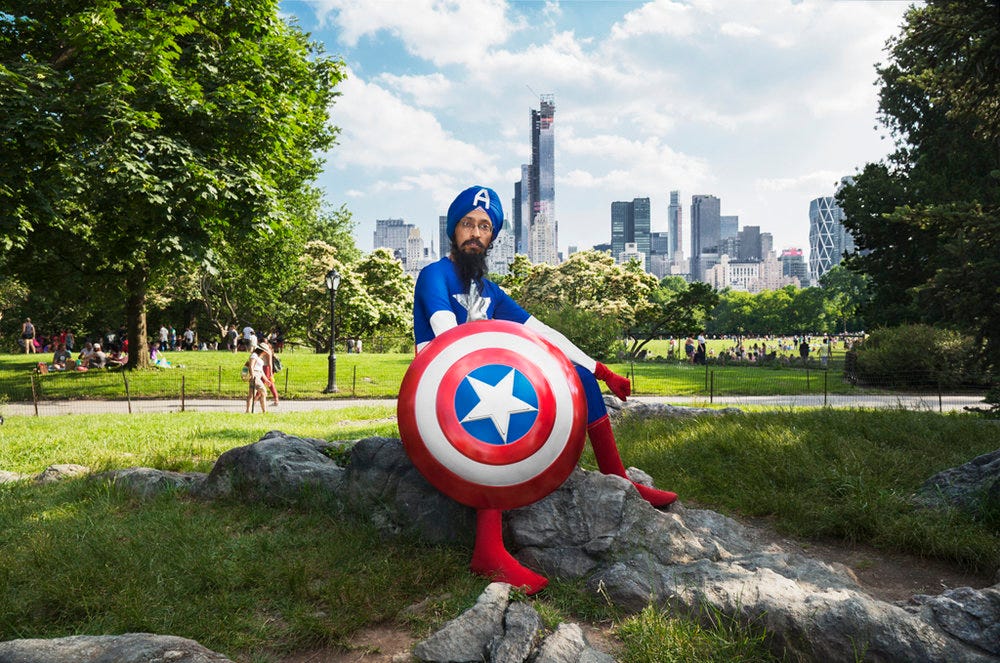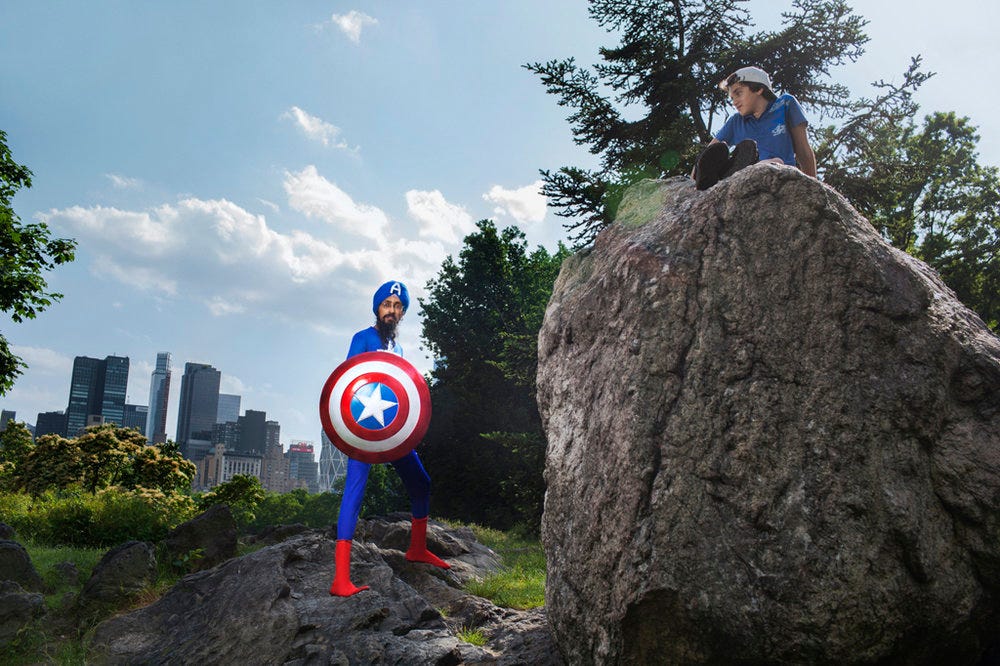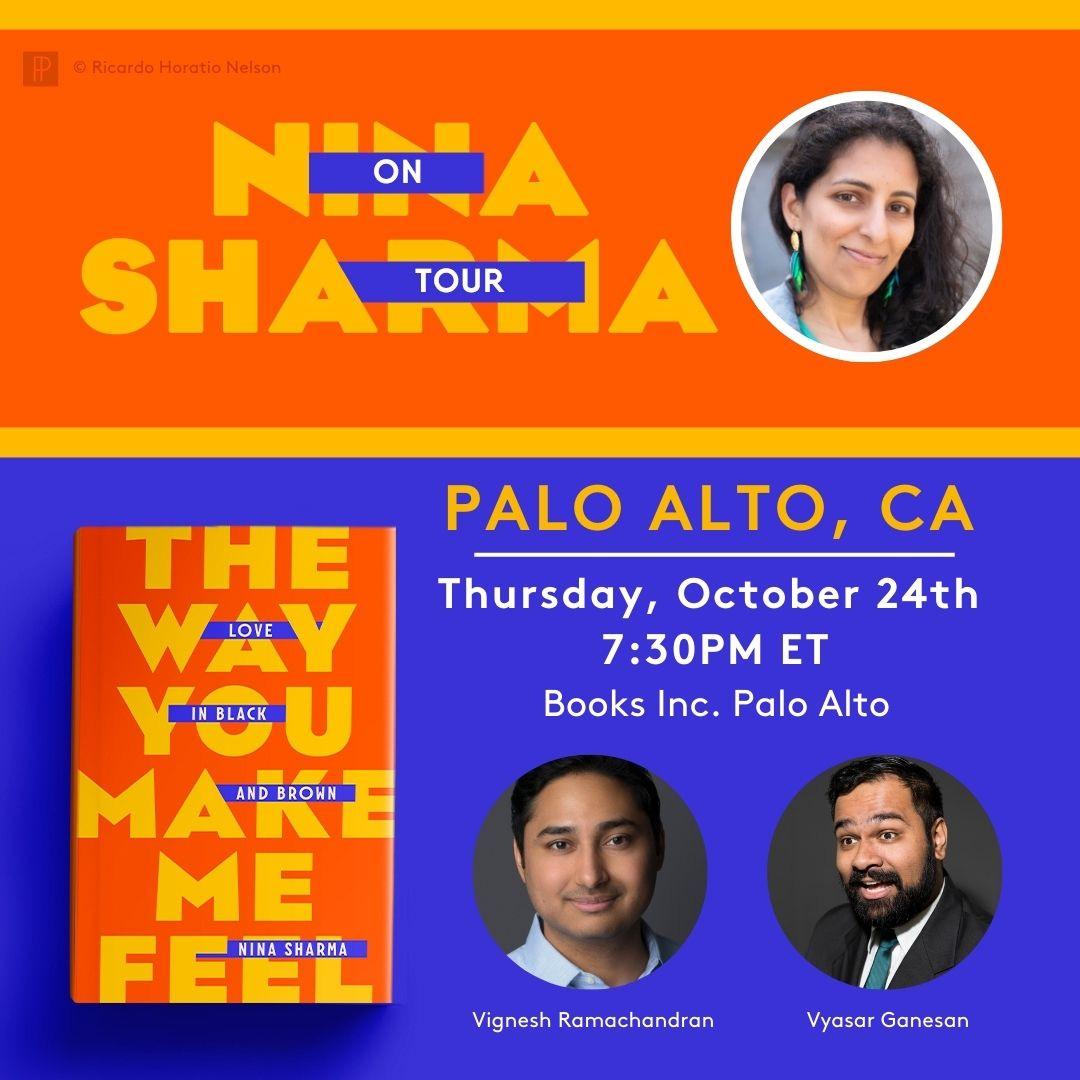Meet Sikh Captain America
New Yorker Vishavjit Singh has been redefining the American superhero with a bearded and turbaned look — and a message to fight intolerance.
Issue #79

Hi all —
I have been reading Isabel Wilkerson’s 2020 book, “Caste: The Origins of Our Discontents,” which explores how the United States has long had social hierarchies, from the days of slavery and how those legacies have carried on in contemporary society.
As we live through yet another election season with stark political polarization in the U.S. and rhetoric that often tries to divide the country, this paragraph struck me:
It is harder to dehumanize a single person standing in front of you, wiping away tears at the loss of a loved one, just as you would, or wincing in pain from a fall as you would, laughing at an unexpected double entendre as you might. It is harder to dehumanize a single individual that you have gotten the chance to know. Which is why people and groups who seek power and division do not bother with dehumanizing an individual. Better to attach a stigma, a taint of pollution to an entire group. Dehumanize the group, and you have completed the work of dehumanizing any single person within it.
Like Haitian immigrants in Springfield, Ohio, who are there legally and contributing toward American society.
Like Sikh Americans who have long been judged and targeted for their external appearances.
That’s why I’m excited to share an interview below with an innovative South Asian American leader who is showing people the humanity in each of us — all beginning with a superhero costume.
Thanks for reading,
Vignesh
The man behind the “American Sikh” story: Vishavjit Singh
It’s not possible to dehumanize Captain America in a traditional sense. It’s actually more likely to see the comic-book superhero character as beyond human — a patriotic symbol and leader of the Avengers.
Now, picture Captain America with a matching turban, a black beard and brown skin. That’s New Yorker Vishavjit Singh.

After the 9/11 attacks, many Sikh Americans faced discrimination as they were often perceived to be from Muslim or Arab communities. In the years that followed, Singh, who identifies as Sikh, began cartooning with bearded, turban-wearing characters. He called them “Sikhtoons.” After the first “Captain America” movie came out in 2011, Singh drew a Sikh version of the character and took a poster of it to New York Comic Con.
“The poster did something interesting,” Singh told Red, White and Brown. “People saw Captain America, but with a turban and beard. Some people liked it. Some people were like: ‘OK, why is Captain America Muslim?’ And I said: ‘Well, this Captain America is Sikh.’ It started conversations.”
Then, on a summer day in 2012, a white supremacist killed several worshippers at a Sikh gurdwara in Oak Creek, Wisconsin. Shortly after, Singh wrote an op-ed in The Seattle Times calling for a new superhero to fight hate crimes. “It’s time we spice up our comical fantasies with colors of our imaginary fears and create a new American mythology,” he wrote.
So by the next year, New York photographer Fiona Aboud photographed Singh for her “Sikhs: An American Portrait” collection. It was a sort of social experiment: On a sunny summer day, Singh wore his Sikh Captain America costume and walked the streets of New York for hours.
“It was like the twilight zone,” Singh said. “People followed me, hugged me, took photographs, I got access to a fire department truck, got pulled into a wedding. People treated me as a celebrity — as one of the most American guys that day in New York City.”
The unique social response eventually led to filmmakers Ben Fischinger, Matthew Rogers and Ryan Westra following Singh for three days as Sikh Captain America across New York. They produced the documentary “Red, White, and Beard,” which is viewable on YouTube:
Last year, Westra and Singh created an animated short film based on Singh’s story — along with accompanying lesson plans for middle and high school students. Check out the 10-minute animated short film, “American Sikh” on YouTube:
Singh’s persona as Sikh Captain American and these films have sparked conversations about identity, creating opportunities for people to build empathy and understand fellow Americans who might look a little different but relate on a human level.
“I want to live in a world where we can live with our ignorances, but extend dignity and respect to each other — and create a space so we can learn from each other, as opposed to living in a world where we know who Sikhs are, who Muslims are, who Hindus are, but then we’re targeting them based on our stereotypes and prejudices,” Singh said. “I want to live in a world where we create a space to tell each other stories and find the connections that we all have — ups and downs.”
Singh has used the power of storytelling via Sikh Captain America to become a public speaker, including talks at schools and companies, where he shares his story and discusses topics like bias and racism. “These are hard things to talk about, but I will share my story with all its vulnerabilities,” Singh explained. “[It] allows people to have the very hard conversations about how we all have potential for bias, and we can do better. We can learn from our mistakes.”
“Once you know somebody’s story, it’s hard to stereotype them, because you’re like: I connect to them,” Singh said.
FBI data shows Sikhs in the U.S. are the third most-targeted group for hate incidents against specific religious identities, after anti-Jewish and anti-Muslim incidents. Additionally, Stop AAPI Hate data recently reported a rise in anti-South Asian online hate over the last year-and-a-half, including a spike in August, as Kamala Harris and Usha Vance began to be more prominently in the public spotlight.
Book event in the Bay Area
This year, author Nina Sharma published her memoir, “The Way You Make Me Feel: Love in Black and Brown,” which is a collection of essays reflecting on her life through the lenses of identity, her interracial relationship and her mental health.
Join Sharma, Indian Matchmaking’s Vyasar Ganesan (from the very first season of the hit Netflix show) and I for a discussion at Books Inc. Palo Alto on Thursday, Oct. 24.
We hope to see attendees from various generations who want to chat about and better understand dating, relationships and marriage discussions across our communities.
What’s your name story?
This is a long-term project, so we still want to hear from you as we chronicle stories about names in South Asian American communities. If you (or anyone you know) is interested in sharing a story about your name, feel free to call or text us at 347-470-0064 or fill out this online form. Nothing will be published until we speak with you and get your consent. (Thanks to everyone who has already shared!)
Red, White and Brown Media facilitates substantive conversations through the lens of South Asian American race and identity — via journalism, social media and events. Please tell your friends and family to subscribe to this newsletter.





